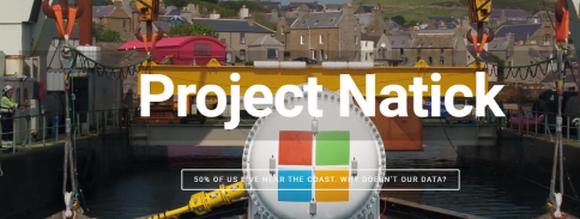 Although we speak of the internet as being in “the cloud,” an estimated 95 percent of internet communication is carried on cables on the bottom of the sea. Now Microsoft is exploring moving computer data centers beneath the sea, as well. Microsoft has recently dropped a 40-foot long data-center pod about 100 ft below the surface onto the seafloor off the coast from the European Marine Energy Centre in Orkney, north of Scotland. The pod is phase 2 of Project Natick. Microsoft previously dropped a slightly smaller 30-foot Natick pod off the coast of California in 2016
Although we speak of the internet as being in “the cloud,” an estimated 95 percent of internet communication is carried on cables on the bottom of the sea. Now Microsoft is exploring moving computer data centers beneath the sea, as well. Microsoft has recently dropped a 40-foot long data-center pod about 100 ft below the surface onto the seafloor off the coast from the European Marine Energy Centre in Orkney, north of Scotland. The pod is phase 2 of Project Natick. Microsoft previously dropped a slightly smaller 30-foot Natick pod off the coast of California in 2016
Quartz reports: The logic is sound: Bringing data centers close to hubs of computing power benefits customers, enabling smoother web surfing or game playing by cutting down the back-and-forth between users and servers. Microsoft says nearly half the world’s population lives within 150 km (120 miles) of the ocean. And because oceans are uniformly cool below a certain depth, keeping the machines under the sea would cut down the cooling costs that make up a large chunk of the operating budget of data centers.
The Project Natick data center is made up of 864 servers packed in a 40-foot container that now sits about 22 km (14 miles) from the coast. That’s a tiny fraction of some of the huge servers—covering hundreds of thousands of square feet—that tech companies like Microsoft operate. But it may be enough to do a pilot test, and prove that the server could be deployed at commercial scale. …
The Orkney islands happen to also generate more than 100% of their energy from wind, solar, and tidal sources. That means Microsoft’s data center, which has its electricity supply delivered through an undersea cable, is also not adding to the ever-growing carbon emissions that are driving climate change.
Microsoft tests Project Natick, self-sustaining underwater datacenter
Thanks to Alaric Bond for contributing to this post.

Think it was Microsoft a few years ago, sucking cold river water out to cool servers with water, people complained of water use, not knowing its returned once cooled.
Wasn’t as if Microsoft was ‘drinking’ all that water.
Womder if that is what Google was doing with the large barges, cooling equipment?
Just dont spring a leak!
By the way:
I sent you the same story from the BBC in June 6th.
Microsoft sinks data
centre off Orkney
BBC.com · 10 hours ago
https://www.bbc.com/
news/
technology-44368813
Is rising sea temperatures not already contributing to global warming?
“because oceans are uniformly cool”
Sounds like an excuse to warm the water temperatures. Might also be the reason certain areas are seeing more storm activity.